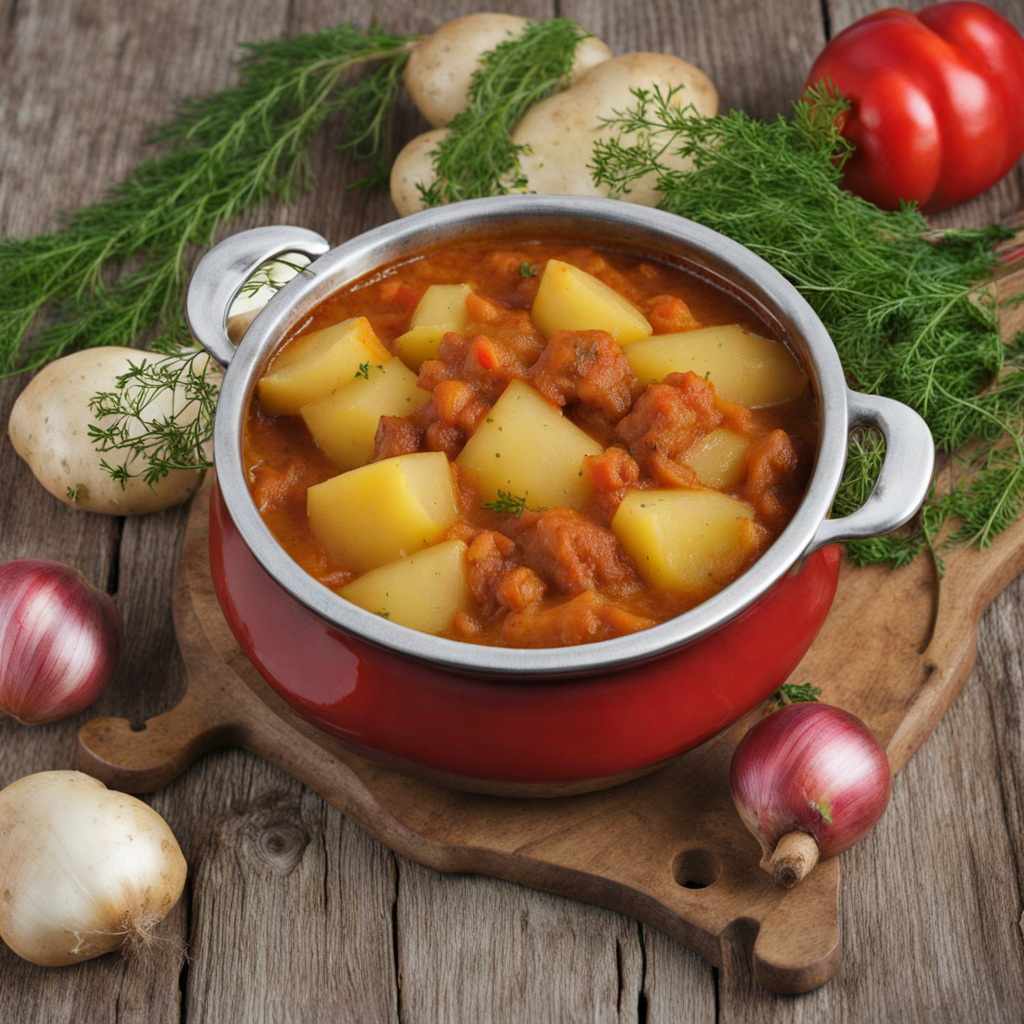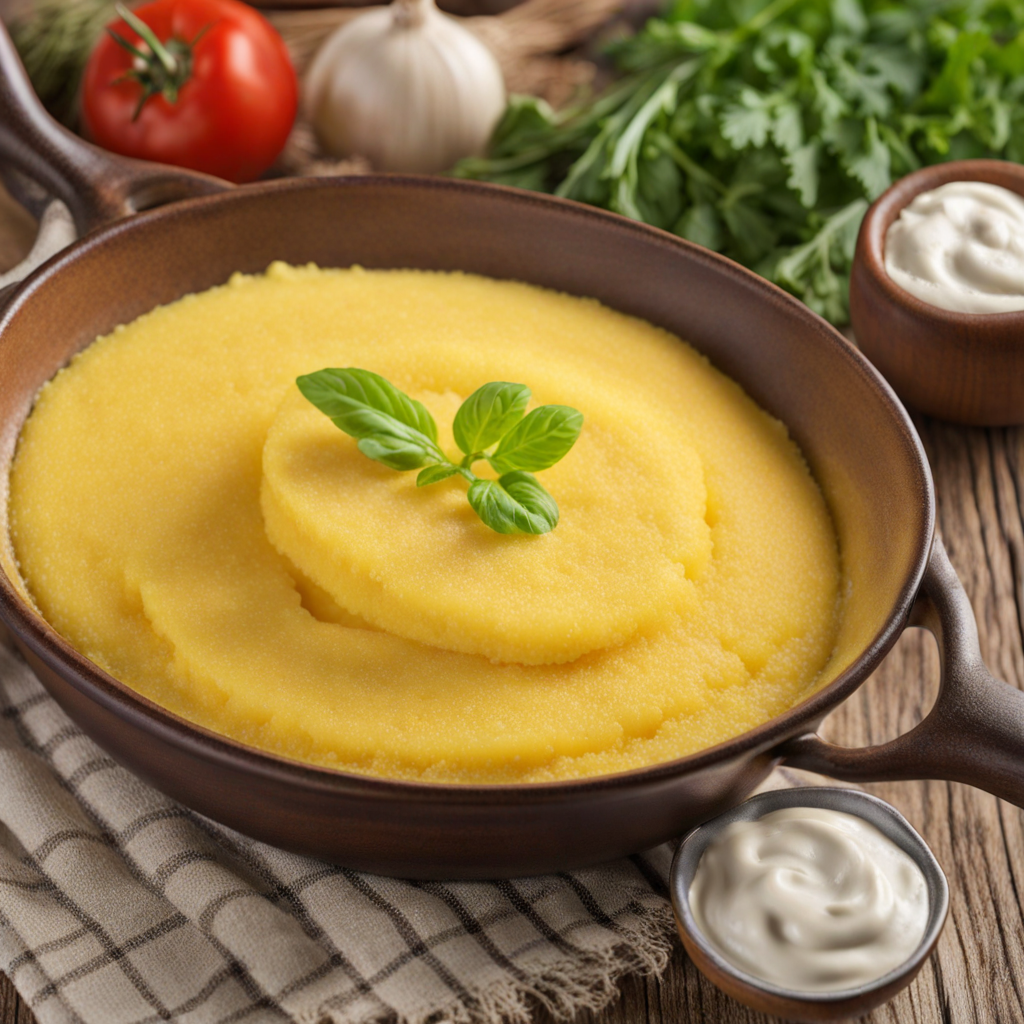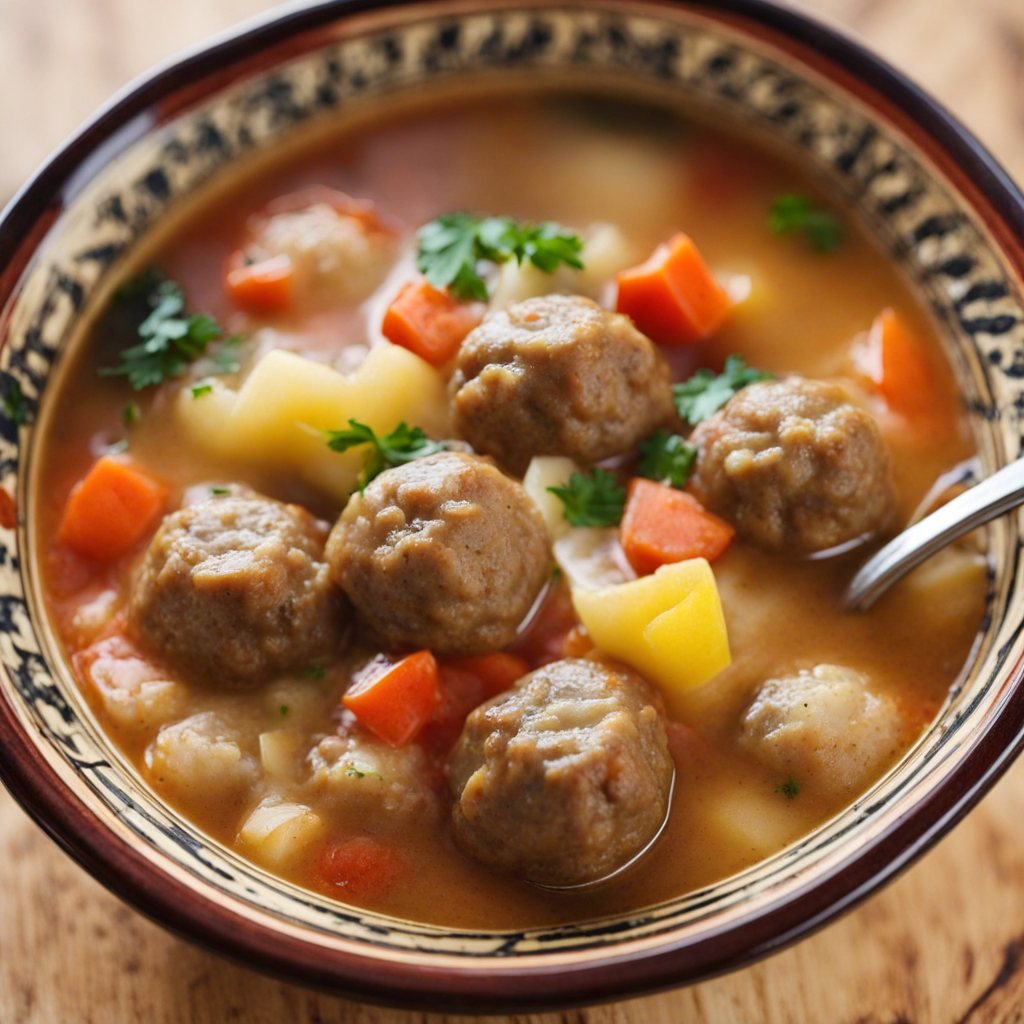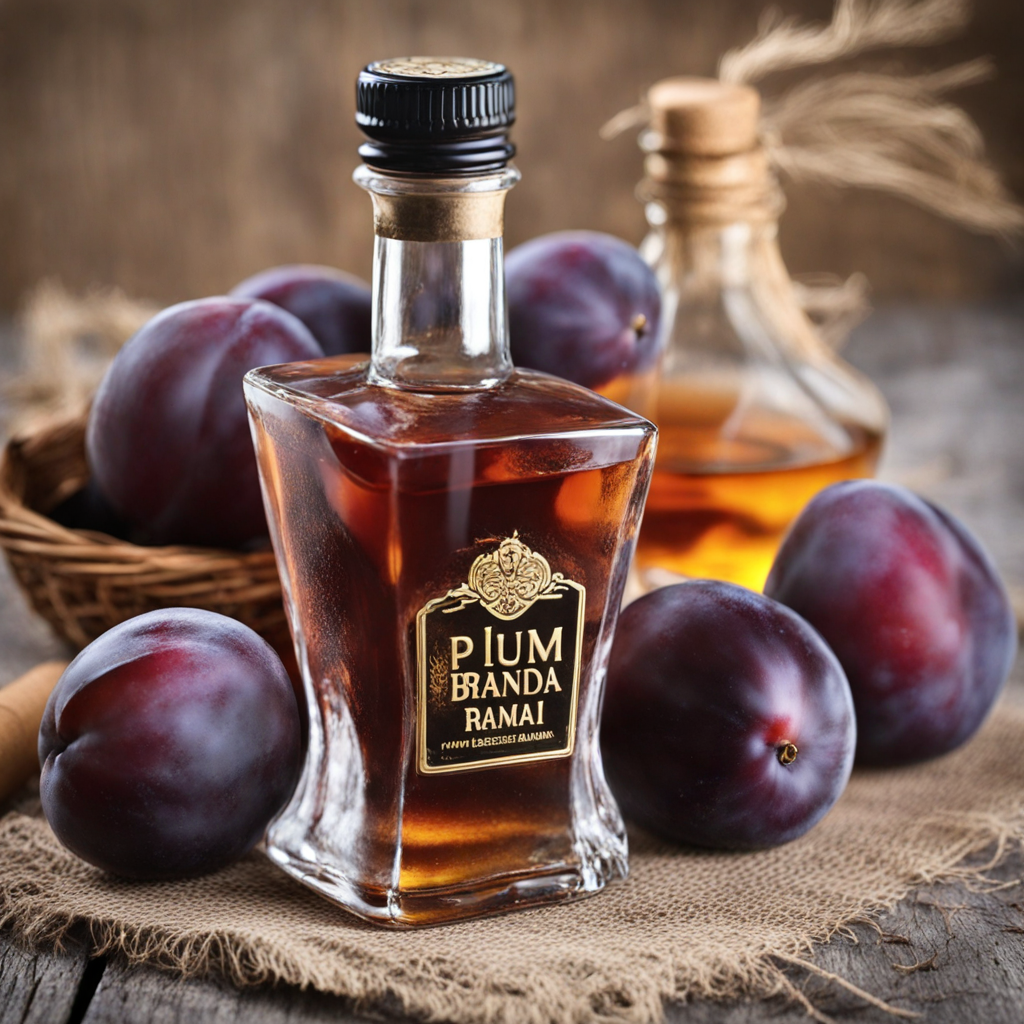Transylvanian Potato Stew
Transylvanian Potato Stew is a hearty and comforting dish that encapsulates the rustic flavors of Romanian cuisine. This stew is primarily made with tender potatoes, which serve as the base, absorbing the rich flavors of the broth. The potatoes are often complemented by a medley of vegetables such as carrots, bell peppers, and onions, which add both sweetness and texture. Each ingredient is simmered together, allowing the flavors to meld beautifully, resulting in a dish that is both satisfying and nourishing. The essence of Transylvanian Potato Stew is enhanced with various herbs and spices, including thyme, bay leaves, and paprika, which impart a warm, aromatic quality to the dish. Some variations may include smoked meats or sausages, adding a depth of flavor that reflects the region's culinary traditions. The stew is typically cooked slowly, allowing the ingredients to release their natural juices and create a rich, savory broth that coats each piece of potato and vegetable. This dish is often served with a dollop of sour cream or a sprinkle of fresh parsley, providing a delightful contrast to the hearty stew. It is an ideal meal for chilly evenings, inviting family and friends to gather around the table and enjoy a taste of Transylvania. Each spoonful offers a taste of the countryside, embodying the warmth and hospitality of Romanian culture.
How It Became This Dish
Tocană de Cartofi: A Culinary Journey Through Romanian Heritage Introduction Tocană de cartofi, or potato stew, is a quintessential Romanian dish that embodies the heartiness of the country’s rural cuisine. With its humble ingredients and robust flavors, it reflects the resourcefulness of the Romanian people and their deep connection to the land. As we embark on a journey through the history of this beloved dish, we will uncover its origins, cultural significance, and evolution over time. Origins of Tocană de Cartofi The roots of tocana, a term derived from the Latin word "tocanare," which means to cut or chop, can be traced back to the medieval period when stews were a staple in the diets of many European cultures. Romania, located at the crossroads of various civilizations, absorbed and transformed culinary influences from the Romans, Greeks, and Ottoman Turks. The introduction of the potato in the late 18th century, after its arrival from the Americas, marked a significant turning point in Romanian cuisine. Initially, potatoes were met with skepticism, but their adaptability and nutritional value soon won over the populace. By the 19th century, potatoes had become a fundamental component of Romanian agriculture and peasant diets. Tocană de cartofi emerged as a practical, nourishing dish that utilized locally sourced potatoes, vegetables, and often meat, creating a satisfying meal for families. Cultural Significance Tocană de cartofi is more than just a dish; it is a symbol of Romanian hospitality and togetherness. Traditionally, it is prepared in large pots, making it ideal for family gatherings and communal meals. Its preparation often involves the participation of multiple family members, fostering bonds and creating a sense of unity. In Romanian culture, food is an integral part of social life, and tocana is frequently served during festive occasions, family reunions, and holiday celebrations. In rural communities, tocana de cartofi has also played a role in seasonal festivities, particularly during harvest time. The dish celebrates the bounty of local produce and reflects the agricultural rhythm of Romanian life. It is often accompanied by homemade bread and pickles, which serve to enhance the flavors and provide a well-rounded meal. Development Over Time As Romania progressed through the 19th and 20th centuries, tocana de cartofi adapted to changing culinary trends and social dynamics. The rise of urbanization and industrialization brought about a shift in dietary habits. While traditional recipes remained popular, the influence of modern cooking techniques and international cuisines began to creep into Romanian kitchens. During the communist era, the state emphasized self-sufficiency and the use of local ingredients. Tocană de cartofi remained a staple, but its preparation often depended on what was available due to rationing and limited access to certain foods. Families learned to be creative, using whatever vegetables were in season or even foraged from nearby fields. The essence of tocana—its adaptability—shone through during these challenging times, reinforcing its status as a comfort food. In contemporary Romania, tocana de cartofi has seen a resurgence as chefs and home cooks alike seek to reconnect with their culinary heritage. Modern interpretations often incorporate various spices, herbs, and additional ingredients such as smoked meats, bell peppers, and tomatoes, reflecting the evolving tastes of a new generation. The dish remains a beloved comfort food, often served in homes and restaurants across the country. Regional Variations Romania’s diverse geography and cultural influences have given rise to numerous regional variations of tocana de cartofi. In Transylvania, for example, cooks may add sauerkraut or other fermented vegetables, imparting a tangy flavor that contrasts beautifully with the sweetness of the potatoes. In the southern regions, tocana is often enriched with paprika, a nod to the influence of Hungarian cuisine. In the Maramureș region, tocana might be prepared with a combination of meats, such as pork and beef, along with a medley of root vegetables. This reflects the area's agrarian lifestyle, where home-cooked meals are made from what is grown on family farms. Each variation tells a story of local ingredients, traditions, and cultural exchanges, weaving a rich tapestry of Romania’s culinary heritage. Modern-Day Tocană de Cartofi Today, tocana de cartofi continues to be a cherished dish, often featured in family cookbooks and culinary festivals. It serves as a reminder of Romania’s agrarian roots and the resilience of its people throughout history. The dish can be found in both traditional restaurants and modern bistros, where chefs put their spin on this classic recipe while honoring its heritage. The rise of the farm-to-table movement has also revitalized interest in tocana de cartofi. Chefs are increasingly focused on sourcing local, seasonal ingredients, which enhances the flavors and supports local farmers. This movement aligns with the traditional Romanian ethos of valuing fresh produce and seasonal cooking. In addition to its delicious taste, tocana de cartofi is often seen as a metaphor for Romanian identity—an embodiment of the spirit of the land and its people. It tells a story of tradition, resilience, and community, making it a dish that transcends generations. Conclusion Tocană de cartofi is more than just a potato stew; it is a culinary narrative steeped in history, culture, and identity. From its humble origins as a peasant dish to its place on modern dining tables, it captures the essence of Romanian life. As generations continue to savor this hearty stew, they not only enjoy its comforting flavors but also celebrate the rich tapestry of traditions that have shaped Romanian cuisine. In a world that often seems fast-paced and disconnected, tocana de cartofi serves as a reminder of the importance of community, family, and the stories that bind us together through food. Whether enjoyed on a cold winter's night or shared among loved ones during a festive gathering, this beloved dish will continue to hold a special place in the hearts and homes of Romanians for years to come.
You may like
Discover local flavors from Romania







